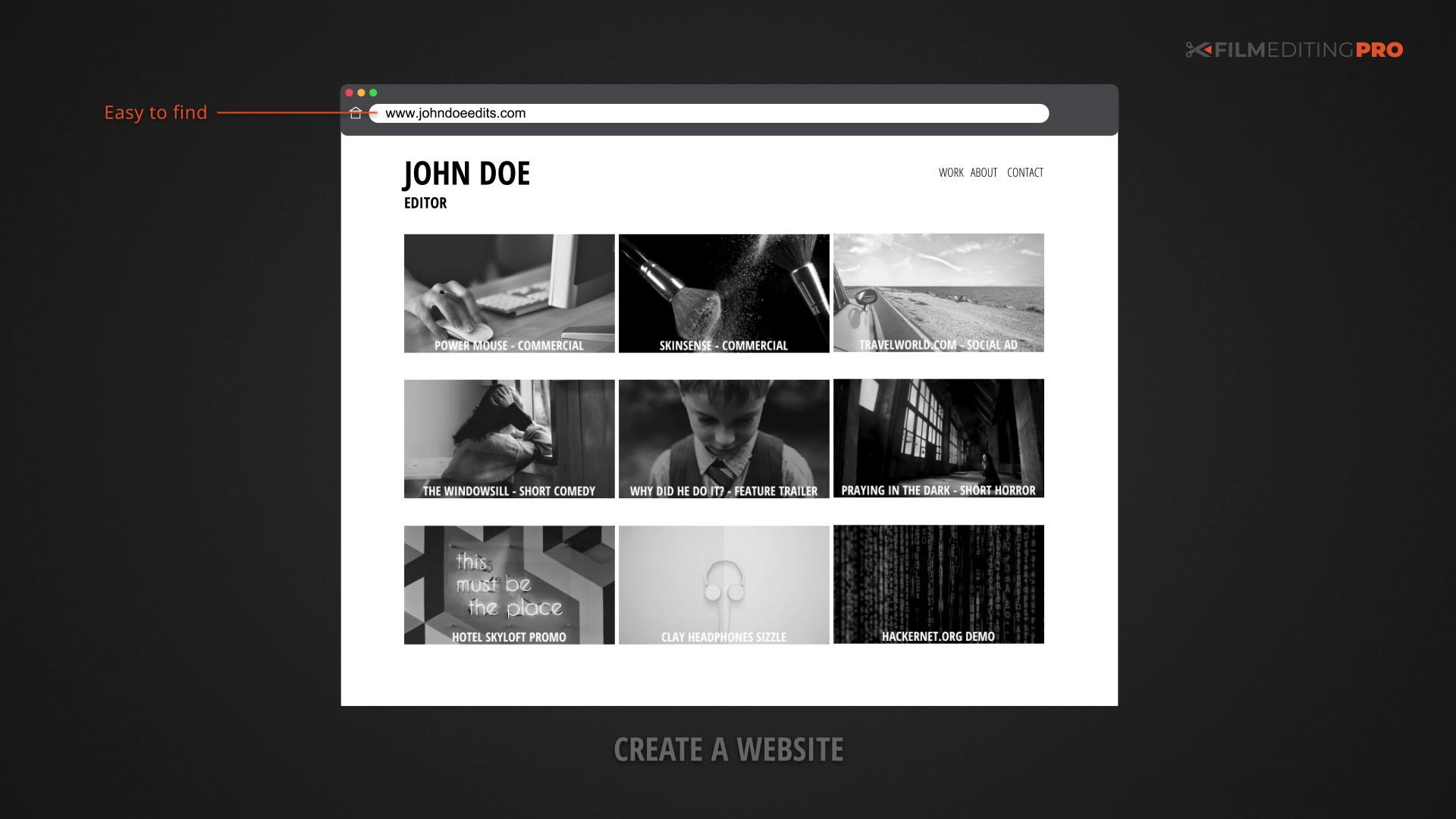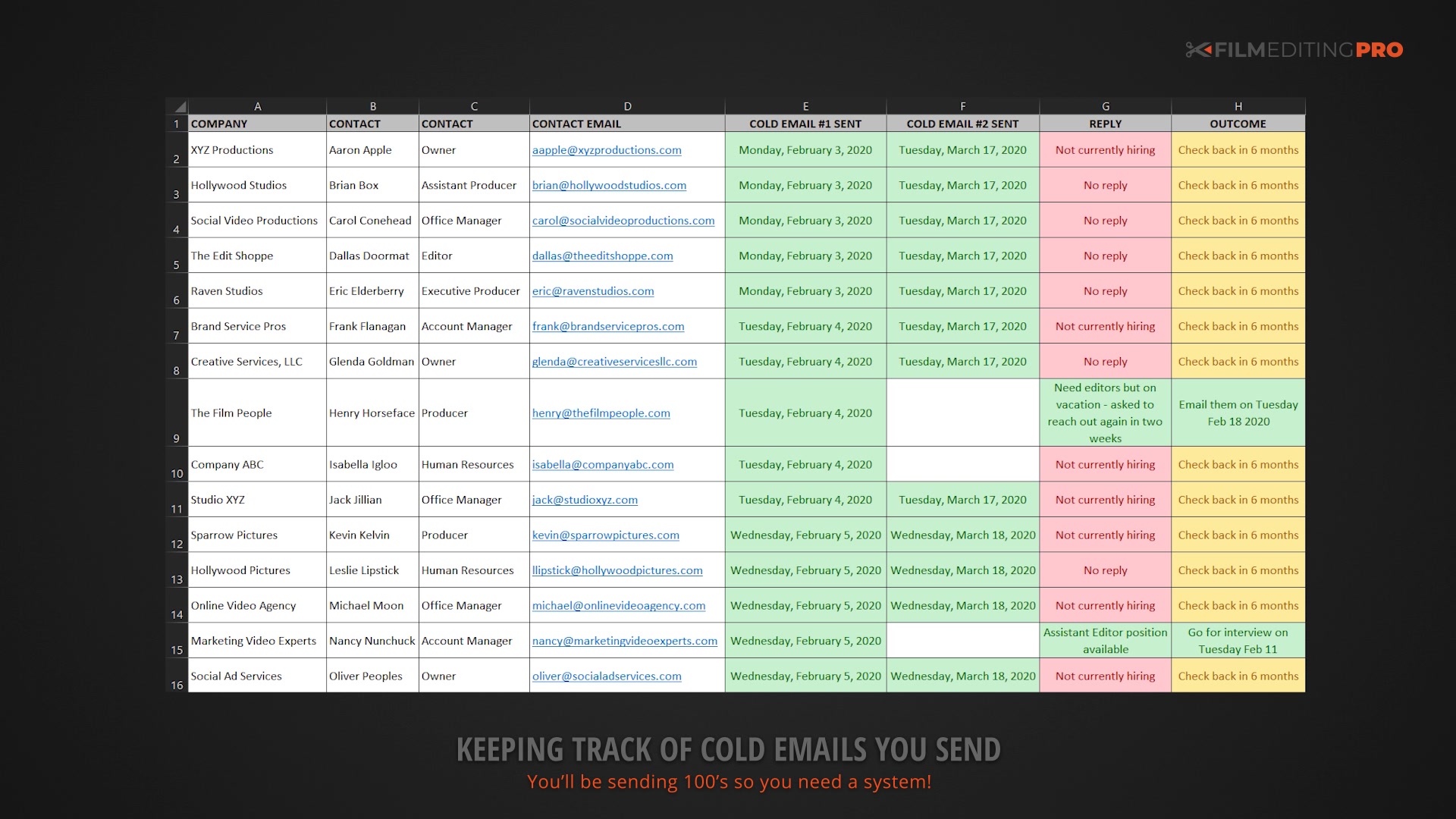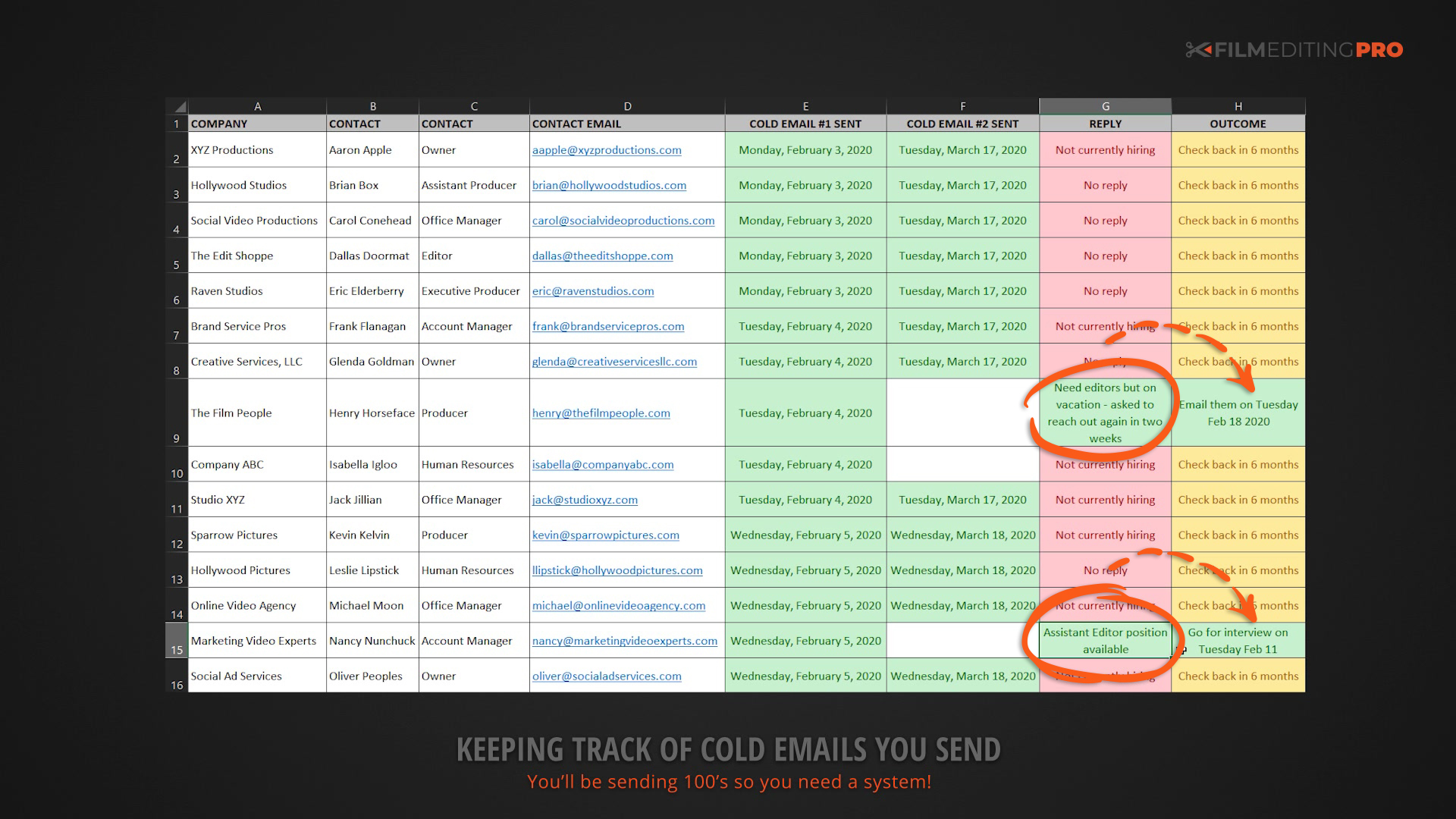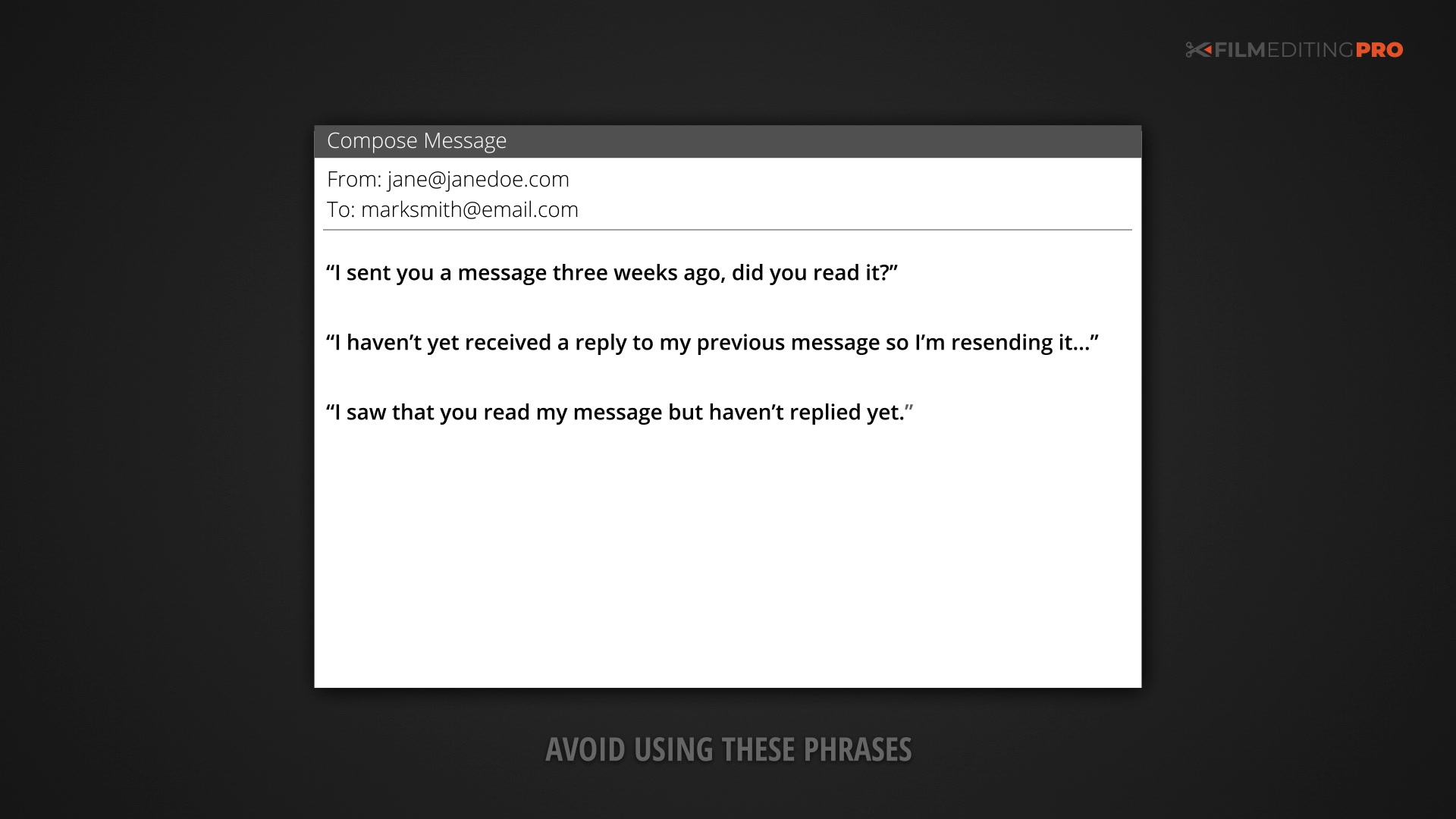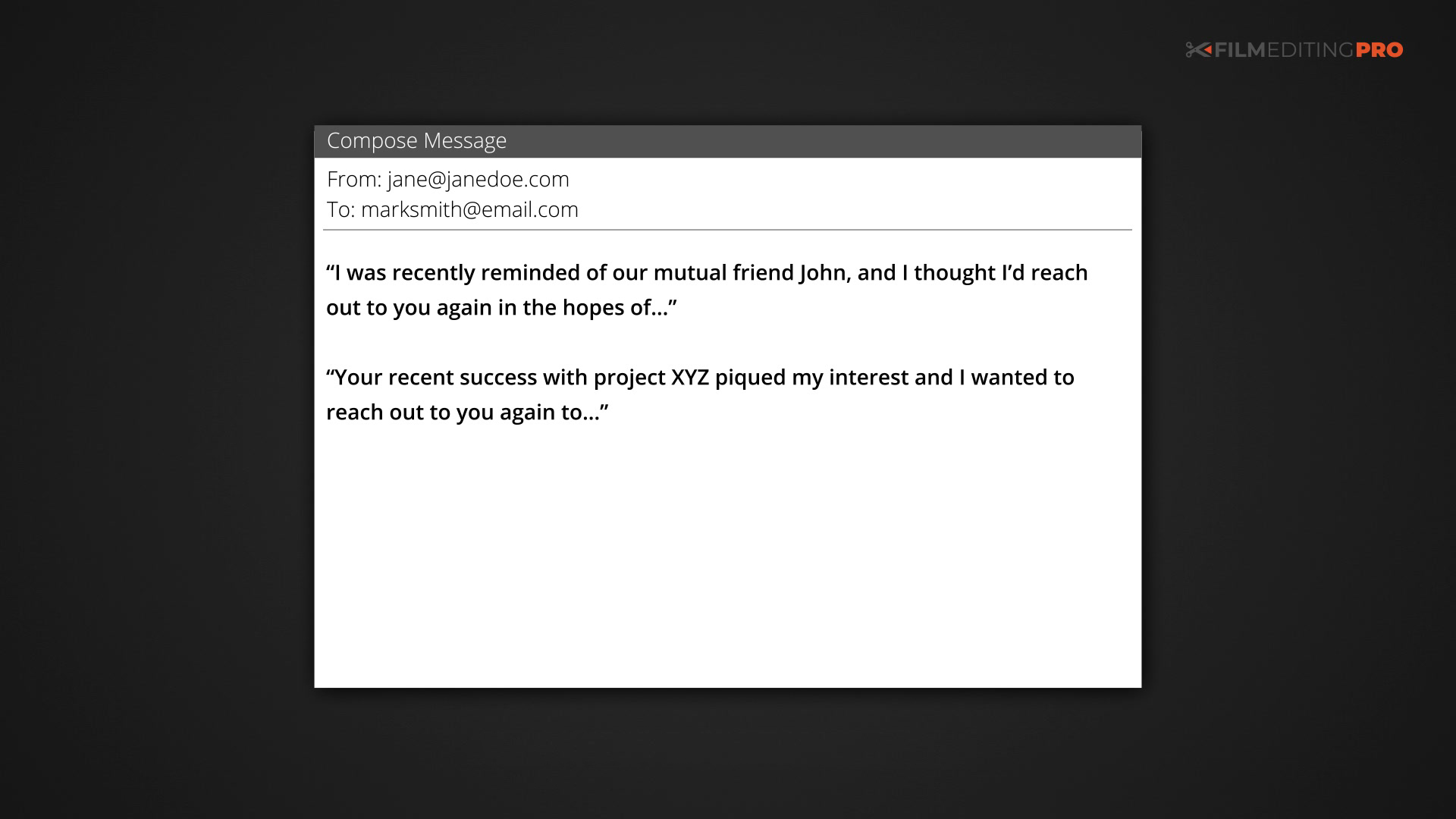By Zack Arnold As a Hollywood feature film, trailer, and television editor of 20 years…

The Editor’s Guide to Demo Reels & Finding Work
One of the biggest questions we are asked is… as an editor, how do I make my demo reel or showreel?
The answer? You don’t.
Check out the video below or read the accompanying transcript below and find out why!
So, first thing’s first…what is a showreel? A showreel is typically a montage of all of your best work. They are used to showcase your talents to the people who might potentially hire you for a job.
While showreels are great for directors, cinematographers and motion graphic artists because their work is highly visual, editors, by nature, are trying to be as invisible as possible.
Often times, in order to judge an editor’s skill, a potential employer or client will need to…
- Watch an entire piece that they built. This is because editing is all about structure, story and pacing. So trying to whittle longer edits down to a great 90 second montage can often ruin the intent of an editor’s original work.
- Ask to watch an editor work to get a sense of how they handle the software. That’s because an editor should be speedy and technically proficient, so knowing your keyboard shortcuts isn’t going to be something that is easily identified in a demo reel.
In this post we’re going to walk you through a 4-step process to help you showcase your work and ultimately land a job. Here’s an overview of what we’ll be covering:
STEP 1: CREATE A WEBSITE
STEP 2: WORK FOR FREE
STEP 3: SEND COLD EMAILS
STEP 4: START NETWORKING
So let’s start with Step 1 and talk about your website.
Creating a Website
Instead of creating a showreel/demo reel, you want to create a website that truly advertises who you are and what you do.
First, it’s important that your website is easy to find. In our example below, the URL is www.johndoeedits.com, the name of the company spelled exactly like it sounds. This will be easy for a client to remember, or so a quick Google search will bring it right up.
The website itself should also be very simple. You can lay out your website any way you want, but make sure potential clients and employers can easily pick and choose the type of work they’d like to review. In contrast, a traditional showreel would force them to watch the whole thing from start to finish…something they might not have the time or interest to do.
It’s also important to consider which type of work you want to showcase. In the case of this website, John Doe is showing three commercial projects on the top row. The next row shows what appears to be three darker, more narrative projects. And finally, the third row shows some graphics and photography.
You should organize your work to cater to the type of job you’d like to be hired for. If you want to edit movies, make sure to showcase your narrative editing skills first and foremost, and if you prefer to seek out work as an editor on corporate or industrial projects, make sure to include those up front.
There are tons of great website building options available at good prices. Here are a few of our favorites.
- WordPress – which has some great theme options such as Vimeography
- Squarespace – which is intuitive and easy to use if you’ve never created a website before.
- Vimeo – a great place to host your videos with their branding tools, ease of embedding, customizable player and professional reputation for being home to filmmakers editors and other serious creative professionals.
- Adobe Behance – designed for creatives to post their work and comes standard with an Adobe account.
Alright…so you’ll definitely want to set up a website. But what do you do if you don’t really have much work to showcase? You need examples of work to get a job, but you need a job to get examples of work. It’s a bit of a catch 22.
Working For Free
Well, one thing you can do is work for free. Not forever, of course, but at first it can help you to build up more examples of work to share with prospective new leads and clients.
Now, all free work is not created equal. Let’s dig into this a bit more.
First you’ll want to ask yourself what type of free work should you be looking for? The best kind of work you can do for free is something that you think adds value to your current resume, or shows that you can take on projects that you don’t normally showcase. If you are a corporate video editor but want to edit narrative films, you might edit a short film for free to build your narrative resume.
*Just a note, your uncle’s, wife’s, sister’s, niece’s 3rd birthday party photo collage probably isn’t what potential employers are looking for.
Which means…finding GOOD free work can actually be a challenge. So, let’s take a look at some of the best places to find good free work:
Friends and Family
Start with friends and family, they are your best resource for finding work. Asking friends and family if they know anyone in the film industry who might need an editor is a great way to discover connections you didn’t know existed.
Local Community
The next place to look for free work is in your local community. Most communities have some sort of filmmaker meetups, whether in your specific town, or a nearby venue. It’s also entirely possible that your local community or nearby city is home to several other filmmakers. You could use a variety of social media tools to put the word out that you are looking to connect with filmmakers local to your area.
Local Businesses
More than likely your local area has several businesses that might need video work for their websites or social media channels. By reaching out to them you might find a place to offer up some help.
Online
And lastly, one of the best places to find free work is online. Facebook groups are a huge part of the filmmaking community, and there is no shortage of filmmakers looking for help on their projects. Groups such as…
…are a great place to start looking. Just a note, these groups require job posters to provide a legal pay rate to post a job. We do not advocate job posters to ask job seekers to work for free, however the film industry, at its lowest levels, is often full of people asking for free work. The value of that work on your resume is for you to decide.
In addition to Facebook groups, you can also look at online job boards, such as…
Alright, so whether you’re trying to get some free work or you’re trying to land a paid editing gig, there’s a skill that’s very important to master…sending cold emails.
How to Send a Great Cold Email
That first message you send out is perhaps the most important message you’ll ever send to someone. Mastering the art of crafting the perfect cold email will stack the odds in your favor. There are a few important points to know about cold emails:
- MAKE A GOOD FIRST IMPRESSION. The first email you write someone one will be your first and only time to make a good first impression.
- HAVE A SPECIFIC CALL TO ACTION. It’s important that your message has a specific call to action or request. Give them something clear cut to follow up on, whether it’s answering a question for you, scheduling a meeting, reviewing your work, etc.
- KEEP IT BRIEF. You want to make sure to keep it brief on your first message. It should be just long enough to get the important information across without making them read a novel. People are busy…be respectful of their time.
So, let’s take a look at exactly how to craft a great cold email!
First, introduce yourself and provide a brief background on who you are. Let’s use Jane Doe as our example here. In her message, she’ll begin with:
Hi Mark, I’m Jane Doe. You and I know each other through our mutual friend John. I’m a recent film school grad with an interest in editing.
This is a great way to open the letter because it tells the reader exactly who you are and how they know you right away. If you have a mutual acquaintance, your chances of getting a response increases quite a bit.
Now you need to get to the point as quickly as possible as your recipient might be very busy. Something like this:
I’m a big fan of the work your company does, I especially loved the commercial spot you did for McDonald’s. I’d love to have the opportunity to sit down and pick your brain about some of the techniques you used in that spot.
This is a short and simple explanation of what you want. It lets them know that you appreciate and know their work, and have an interest in what they’ve specifically done.
This also gets to the point quickly by asking for a meeting. In addition to asking for a meeting, it’s important to explain why they are the right person to help you on your journey. You might say something like:
I really love seeing commercial spots with a comedic editing style. I recently had the chance to work with a friend on a short comedic piece and was inspired by some of the work I’ve seen on your website.
Once you’ve built the body of the email, you want to sign off with an actionable item. Ask a question that needs answering, suggest a next step, or even ask if they’d be willing to take a look at some of your work and offer their feedback. You could write something like this:
I’d like to offer to buy you coffee and ask you for some advice if you have any free time in your schedule. I’ll be happy to come over to your neighborhood whenever it is most convenient for you.
Remember: Many people are BAD at writing emails, communicating and following up tactfully. It doesn’t take much to set yourself apart. Handling these things well will already put you in the top percent of people out there vying for the same positions.
So, now that you’ve figured out how to craft a good cold email, who should you be sending them to? It’s all going to depend on what you want to accomplish. Just like building the scene of an edit, you need to first figure out what the goal of the email is.
If you want to be a narrative editor, you could…
- Look for local filmmakers in your area using Facebook groups.
- Attend local film festivals where you’ll have a chance to attend parties and events where you can interact with local filmmakers.
- Try connecting with professional working editors. You can use IMDB Pro to reach them through their managers, or try to reach out personally through social media like Twitter or Instagram.
If you want to be an editor who makes creative content for different brands, you might consider…
- Starting local and sending emails to the marketing teams of any local companies.
- Asking friends and family if they can connect with any local business owners who might need to have a video editor work with them on any upcoming projects.
And if you want to work in advertising…
- Research ad agencies in your local area and reach out through their careers contact page.
- Anytime you travel to a major city you can plan in advance to visit and send agencies in that city an email letting them know you’d like to meet.
To set some realistic expectations, the majority of editing work happens in a major city. Places like Los Angeles, New York, Chicago, Seattle, Austin and Denver in the U.S., Toronto and Vancouver in Canada, and major cities like London, Paris, Tokyo, Shanghai and Amsterdam around the world.
But don’t be discouraged. In a place like Los Angeles, for instance, many of the creative professionals you’ll encounter come from places all over the world. With all of those people vying for the same jobs, it’s totally normal to not receive a reply to an email you send out.
Generally, cold emails are hit and miss. It’s a gamble and could take a couple emails to a hundred different people before you get a solid reply. Think of this process as though you were launching a marketing campaign for yourself. The more emails you write, the more likely you are to receive a response.
How Do You Keep Track of All This?
To keep track of all these emails you’re sending, along with the status of each, we’d suggest creating a spreadsheet. Below is an example of the type of spreadsheet you can use.
There’s a number of columns across the top. You’ve got the name of the company, the contact person you found on their website or through some other means who you’re going to reach out to. Their position, and their email.
*Of course, these are all made-up companies and people, so I don’t recommend reaching out to Carol Conehead looking for editing work.
The next four columns are designed to track your outreach, their response or lack thereof and the outcome, which is basically your next step. You just write the date you sent your initial cold outreach email in the appropriate cell and then, if you don’t hear back, the date you sent a follow-up email.
Color Coding
- Green – Basically means the task is complete and/or had a positive outcome.
- Red – A negative outcome. You’ll probably end up with a lot of these…”Not Currently Hiring” and even more common, “No Reply”. That’s ok. Remember, this is a game of numbers.
- Yellow – In the Outcome column, use this color to remind you reach out again in 6 months to a year.
But every so often, you’ll hear back with something positive or at least a possible opportunity. In our example you can see that Henry Horseface replied, saying that he’s currently on vacation but they do need editors. He asked you to reach back out in a week. Great! So in the Outcome column, write a reminder to do that and color it green so it stands out. You definitely don’t want to forget to send that email.
You can also see that Marketing Video Experts replied that they have a position for an assistant editor and have you scheduled for an interview. That’s also great! It’s pretty common to start as an assistant before being promoted to a full editor.
Now, you’ll just need to decide if you’re ok working for someone named Nancy Nunchuck!
Don’t get Discouraged if You Don’t Hear Back
So, obviously, try to remember that people are busy. It’s possible your email just came at the wrong time. When you send a cold email, consider the recipient’s schedule:
- If you are reaching out to an editor working on a TV show, try to find out when they are in the off-season and send your message then.
- If you are reaching out to an editor who might have a more traditional 9-5 job, try to send your email right before lunch time, most people tend to check their messages around that time.
If you don’t hear back, you can always send out a follow up email but be careful how you do it. For example, here are some phrases you should try to avoid using…
These are a bit aggressive and probably going to irritate the recipient. Instead, try something like this:
These are great ways to continue a conversation even though it may be one sided at the moment. It reminds the recipient of your previous message and your connection to them, while prompting them again to take action.
Now, the last step to landing editing gigs is to start networking. This will open up more opportunities to look for work directly and also provide mutual acquaintances or valuable introductions for even more email outreach.
Start Networking
Although it’s important to have excellent technical proficiency and strong creative instincts, finding your first job and many jobs thereafter is as much about who you know as what you know. Here are 4 great suggestions to start your networking journey:
1. Meet Other Filmmakers
The first tip for networking is to simply meet other filmmakers. Surround yourself with friends in the film industry, attend their events and meet their friends. The more people you meet, the more opportunities you give yourself to find meaningful connections.
2. Join Networking Events
The film industry is full of great networking events, especially for editors. If you live in or around any major city across the world you are likely to find a local post production event or meetup once a month.
These are great places to meet n’ greet with other editors and filmmakers, learn about new tools and techniques and make others aware of you in your local community.
But if you don’t live near a major hub, that’s alright because there are tons of online groups where you can connect to other filmmakers and editors. Facebook groups, such as Black With No Cream and Blue Collar Post Collective are great groups to join and participate in.
3. Volunteer
We talked about this earlier, but volunteering your time is actually a great way to network. The more you work alongside other filmmakers and editors the more opportunity you have to impress them with your efforts and improve your skills.
4. Leave a Good Lasting Impression
And finally, networking is all about leaving a good lasting impression. Once your current job is done, you want to make sure you’ve left the project in better shape than when you found it, and that your relationships with your colleagues, producers and other filmmakers across the board were memorable and positive.
The hope is that when you follow up with a producer from a previous project six months later, a message from you prompts them with a positive reaction, rather than disdain that you’d bother to send them a message again.
Wrap Up
Remember, finding your first job is often the hardest…and finding your 2nd, 3rd and 4th can still be tricky. There are a lot of talented people out there and editing is a fun job that many people want to do. These tips will give you an edge over your competition, as most people won’t put in the same amount of effort.
Approach your editing job search with the same precision, thoroughness and attention to detail as your edits and you’ll give yourself the best possible shot of getting paid to work on projects that excite and fulfill you.
————
But wait, there’s more!
If you’ve enjoyed this tutorial, watch a FREE 3-part video series any any editing topic that interests you. Or if you’d rather read, download a free PDF editing guide.
Leave Your Thoughts & Comments Below:
